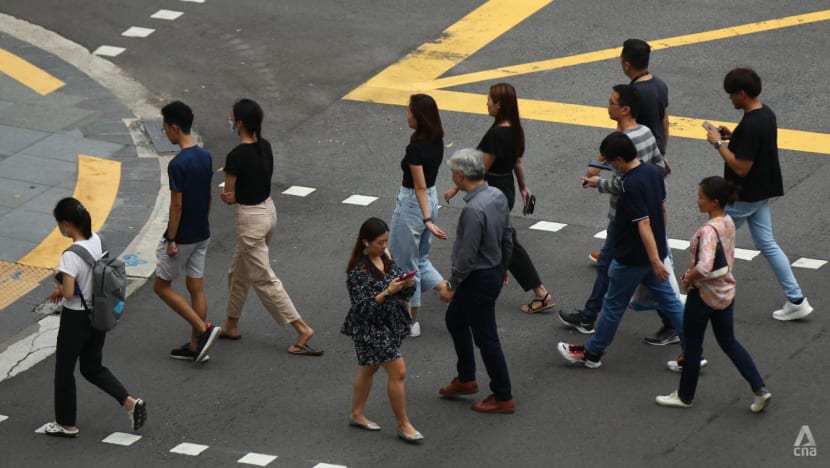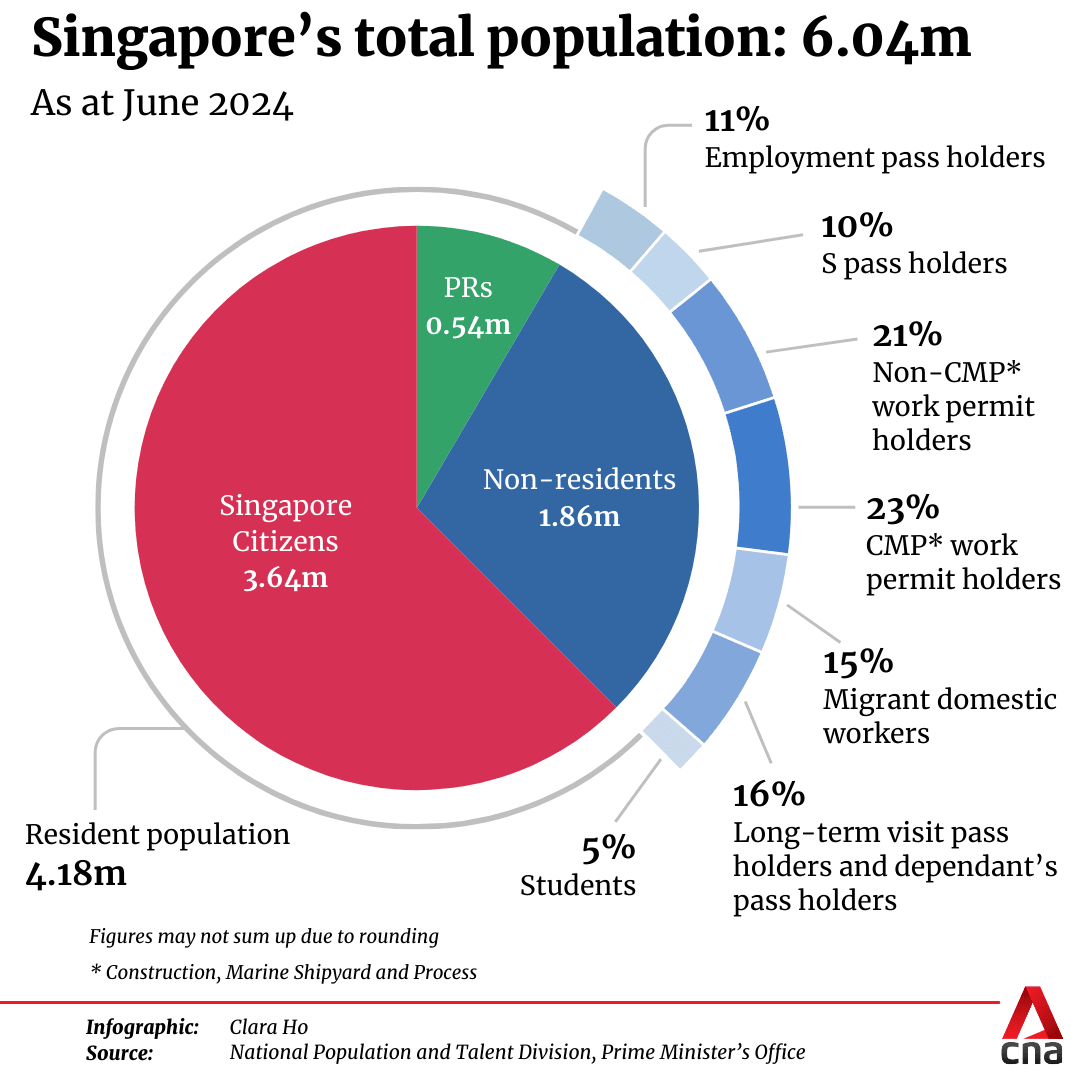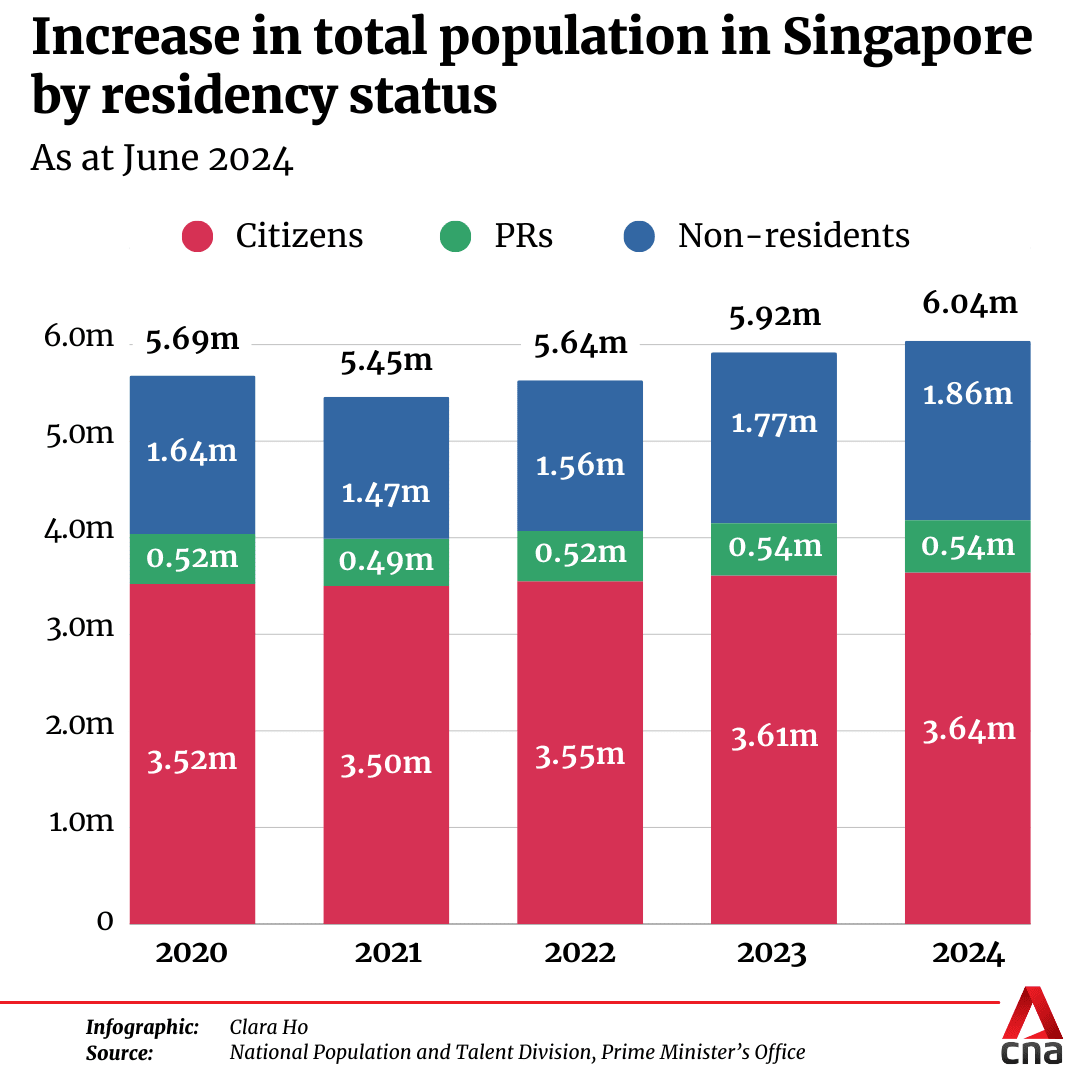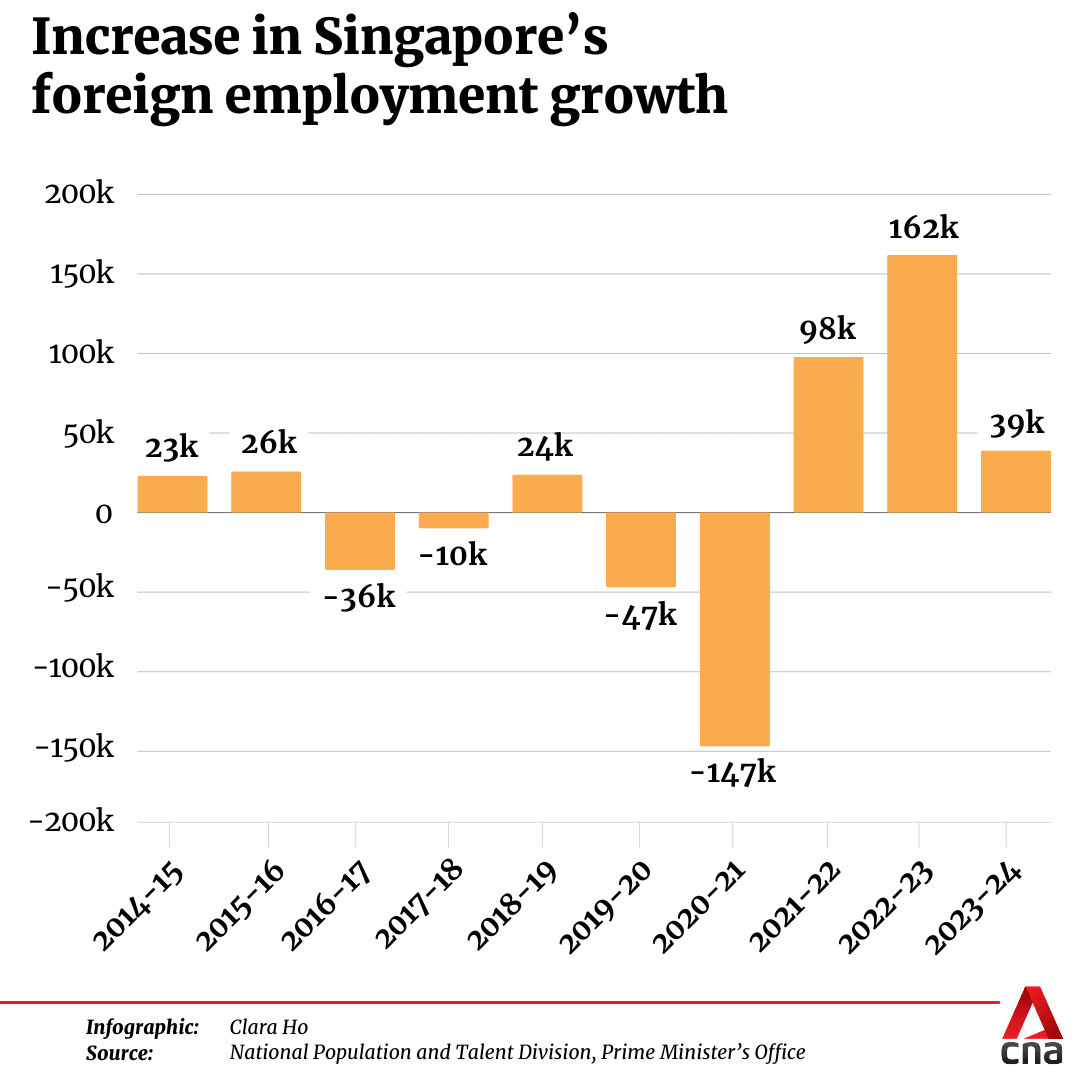Singapore’s population rises to historic high of 6.04 million, mainly due to growth in non-resident population
This is the first time the country’s population has exceeded six million.

File photo of people crossing the street at the central business district (CBD) in Singapore. (Photo: CNA/Syamil Sapari)

This audio is generated by an AI tool.
SINGAPORE: For the first time, Singapore’s total population has exceeded six million, mainly due to the growth in the non-resident population.
As of June this year, the country’s population stood at 6.04 million, a 2 per cent increase from last year.
The figures were published on Tuesday (Sep 24) in the annual Population in Brief report by the National Population and Talent Division (NPTD) of the Prime Minister’s Office and its partner agencies.

Of the 6.04 million, there were 4.18 million residents and about 1.86 million non-residents, which comprise the foreign workforce, migrant domestic workers, dependants and international students.
According to the report, the non-resident population jumped by about 5 per cent from last year. The increase was seen across most pass types, with work permit holders contributing most to the increase (44 per cent of non-resident population), followed by migrant domestic workers (15 per cent of non-resident population).

“The (non-resident) population is diverse, and its size and composition fluctuate depending on our economic and social needs,” read the report.
“As Singapore is fundamentally labour constrained, the foreign workforce complements our local workforce and allows companies to access a broader range of skills from the global labour pool.”

The report also showed that the annualised population growth rate over the last five years (2019 to 2024) was slightly higher than in the preceding five-year period (2014 to 2019).
This was mostly due to post-COVID growth in the number of work permit holders in the construction, marine shipyard and process (CMP) sectors as companies set about catching up on projects that were delayed by the COVID-19 pandemic, the report said.
NPTD said Singapore residents continue to fill higher-paying jobs, with resident employment growing in sectors such as financial and insurance services, information and communications, and professional services.
SINGAPORE’S TOTAL POPULATION LIKELY TO BE "SIGNIFICANTLY" BELOW 6.9 MILLION BY 2030: NTPD
It also reiterated that Singapore’s total population is likely to be "significantly" below 6.9 million by 2030, making reference to a figure that had been included in a Population White Paper released in 2013.
NPTD had said in the white paper that the country's total population could range between 6.5 million to 6.9 million by 2030. This sparked a public outcry and the government said it was a not a forecast or target, but for planning purposes.
At last year's Committee of Supply debate, Minister in the Prime Minister's Office Indranee Rajah said in planning for the future, the government has to consider what the country's future population will look like, not just in terms of size but also composition and make-up.
This, she said, is contingent on many factors including various demographic trends, such as birth rates, life expectancies, and migration, as well as future social and economic needs.
As such, the government does not plan on a single population planning parameter, she said.
Instead, various scenarios are developed to stress-test assumptions and allow for a range of possible outcomes.
NPTD said on Tuesday that based on these various scenarios, the planning parameter of 6.9 million remains relevant for the 2030s.
The Ministry of Manpower’s (MOM) latest quarterly labour market report, which was published on Sep 17, showed that Singapore’s resident labour force participation rate stood at 68.6 per cent for those aged 15 and over.
This is higher than all but four member countries of the Organisation for Economic Co-operation and Development (OECD): Iceland, New Zealand, Netherlands and Switzerland.
MOM's report had also recorded improvements in unemployment rates among residents and citizens in June (2.0 per cent overall, 2.7 per cent for residents and 2.8 per cent for citizens). The resident long-term unemployment rate stayed low at 0.8 per cent.

















